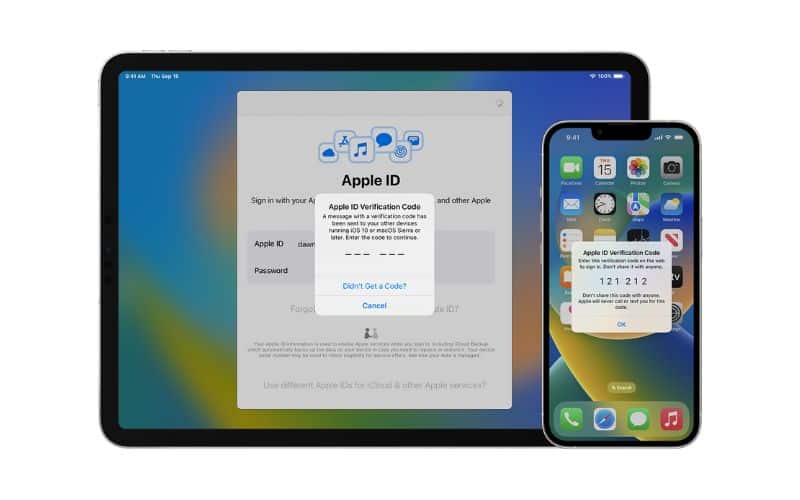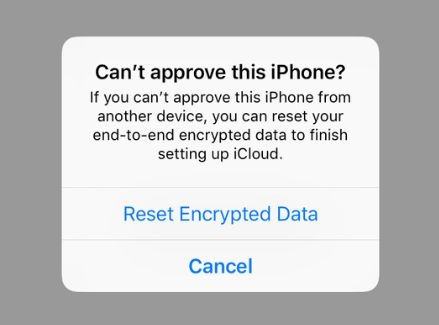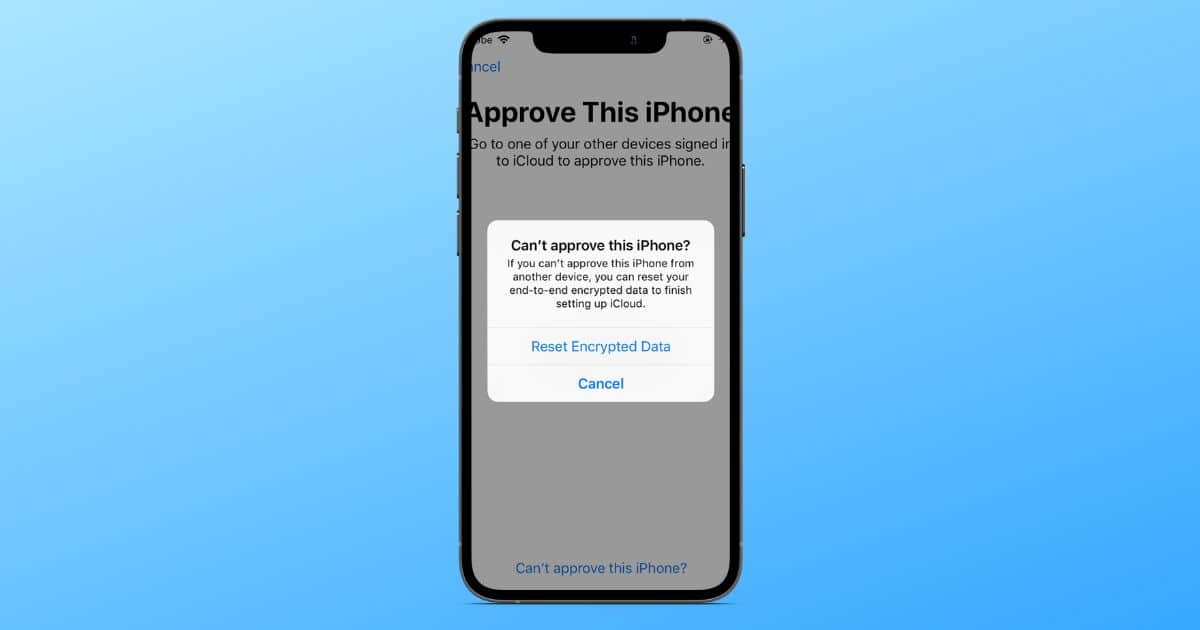The “Can’t approve this iPhone?” notification allows you to reset end-to-end encrypted data to setting up iCloud on a device. However, many of us might be hesitant to reset encrypted data. Mainly because we have no idea what is means or why you are seeing Reset End-to-End notification on iPhone? You might even have some other questions like, how do you get rid of it and will you lose data after resetting encrypted data?
Read along to learn more about end-to-end encrypted data notification on iPhone, iPad and Mac.
What Is End-to-End Encrypted Data on iPhone?
End-to-end encryption is a security protocol that ensures the safety of your data. It does so by encrypting data that can only be decrypted by the source and the intended destination. Within the Apple ecosystem, end-to-end encrypted data can only be decrypted by other devices where you’ve signed in using your Apple ID.

In case of a data breach, your end-to-end encrypted data will be secure. Because, no one, not even Apple, has access to the decryption key apart from you. Only devices that you’ve signed in to using your Apple ID will be able to decrypt this data. Also, you must have two-factor authentication enabled in order to use this feature.
Now that we have some basic understanding of end-to-end encryption, let’s move ahead to understanding the Reset Encrypted Data notification on iPhone, iPad, and Mac.
When Do You Get the Reset End-to-End Encrypted Data Notification?
There are several scenarios where you might encounter the Reset Encrypted Data prompt on your iPhone, etc. However, it usually happens if you fail to provide the two-factor authentication code when setting up a new device or logging in to your Apple ID.

Apart from this, you might also encounter the Reset End-to-End Encrypted Data notification due to software bugs, iCloud syncing issues, etc. Now, the question is what can you do if you encounter the Reset Encrypted Data notification?
What To Do if You Get the Reset Encrypted Data Notification?
Many troubleshooting guides will recommend disabling two-factor authentication to get rid of the Reset End-to-End Encrypted Data notification. Sadly, Apple enables two-factor authentication by default for recently created Apple IDs. And, you do not even have the option to disable it. Now, this only applies to people who’ve created their Apple ID on devices running on iOS 13.4, iPadOS 13.4, macOS 10.15.4, or later.

If you have created Apple ID on prior software versions, you can disable two-factor authentication. Please refer to our detailed guide on how to turn off two-factor authentication, where we’ve covered this in depth. However, many of us won’t be able to disable two-factor authentication, since we’ve recently created our Apple IDs. In this case, we have no choice and must select the “Reset Encrypted Data” option in the prompt. So, let’s look into what happens when you reset end-to-end encryption data on your iPhone.
What Happens When You Reset End-to-End Encrypted Data?
When selecting the Reset Encrypted Data option, most people worry about losing their photos, files, calendars, contacts, etc. However, rest assured that you do not lose any of this data when resetting your iPhone’s encrypted data. Refer to the list below to check what data is deleted from your iPhone.
- Siri Information
- Wi-Fi passwords
- iCloud Keychain
- W1 and H1 Bluetooth keys
- Apple Card transactions
- Payment information
- Maps and search history
- Health data
- Home data
- Memoji
- Messages in iCloud
- QuickType Keyboard learned vocabulary
- Safari History, Tab Groups, and iCloud Tabs
- Screen Time
Out of all of these options, many will be upset about losing their Messages. Fortunately, if you have enabled iCloud Sync for Messages, you can restore them from a backup. Moreover, we suggest you backup your iPhone to iCloud before you reset end-to-end encrypted data on your iPhone.
Resetting End-to-End Encryption Doesn’t Result In Data Loss
Now that you’ve read this entire guide, we hope you have clarity on end-to-end encryption and what entails resetting it on the iPhone. Nonetheless, if you still have any doubts, please let us know in the comments.
